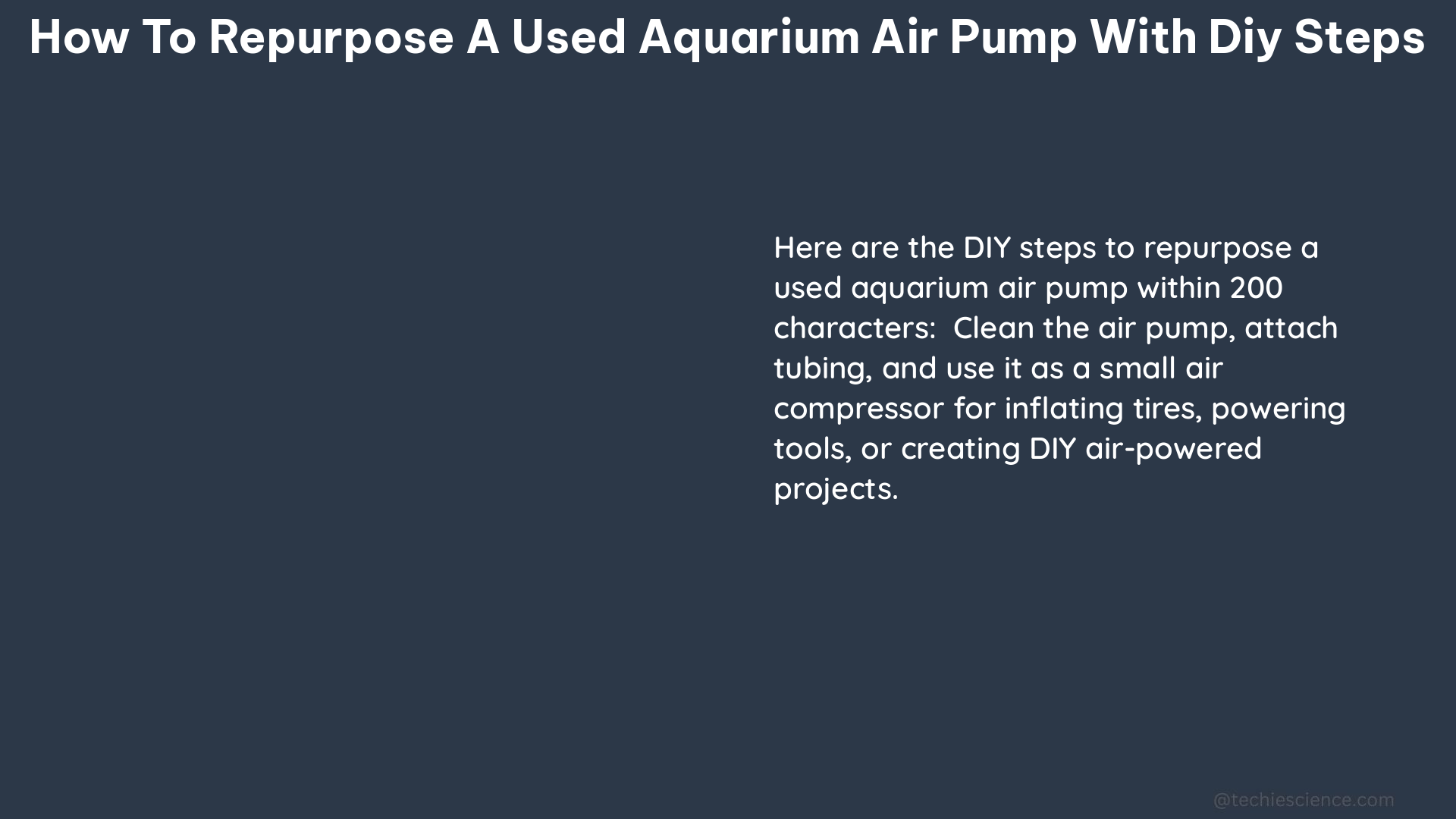Repurposing a used aquarium air pump can be a cost-effective and creative way to build various DIY projects. By following the steps outlined in this guide, you can convert an aquarium air pump into a weak vacuum pump suitable for simple tasks like picking up electronic components or de-soldering applications.
Understanding Aquarium Air Pumps
Aquarium air pumps are designed to provide a steady stream of air bubbles in aquarium tanks, typically used for oxygenation and water circulation. These pumps are relatively inexpensive, widely available, and often discarded when upgrading or replacing an aquarium setup.
The key components of a typical aquarium air pump include:
- Motor: The electric motor that drives the pump mechanism.
- Diaphragm: A flexible membrane that expands and contracts to create air pressure.
- Valves: One-way valves that control the air flow direction.
- Housing: The outer casing that protects the internal components.
Repurposing the Air Pump as a Vacuum Pump

To convert an aquarium air pump into a vacuum pump, you’ll need to follow these DIY steps:
Step 1: Open the Pump
- Locate the screws on the housing of the air pump and remove them using a Philips screwdriver.
- Carefully separate the two halves of the housing to expose the internal components.
Step 2: Rotate the Pump Assemblies
- Identify the white plastic squares or discs on the pump assemblies.
- Rotate each of these squares by 180 degrees, effectively reversing the air flow direction.
Step 3: Reassemble the Pump
- Place the two halves of the housing back together, ensuring that all the components are properly aligned.
- Secure the housing with the screws you removed earlier.
The entire transformation process should take approximately 5 minutes using a Tetra Whisper Aquarium pump and a Philips screwdriver.
Vacuum Pump Performance
The vacuum pump created from the repurposed aquarium air pump will have a relatively weak output, but it can still be useful for light-duty tasks. Some potential applications include:
- Picking up and handling small electronic components
- Assisting with de-soldering operations
- Holding down lightweight materials during crafting or DIY projects
- Providing a gentle suction for cleaning or dust removal
While the vacuum pump may not replace industrial-strength vacuum pumps, it can be a valuable tool for hobbyists and DIY enthusiasts who need a low-cost solution for their projects.
Measuring the Airflow
For those interested in quantifying the airflow of the repurposed vacuum pump, there are a few methods you can use:
Manual Measurement
- Submerge the pump in a tank of water.
- Place a measuring cup upside down over the pump’s output, ensuring it is filled with water.
- Turn on the pump and collect the bubbles in the measuring cup for a known period of time.
- Divide the volume of the collected bubbles by the time to obtain the flow rate.
Engineered Measurement
- Create a venturi with a differential pressure sensor to measure the pressure data over time.
- Install a simple orifice in the discharge hose and connect a manometer to read the differential pressure (dp).
- With the dp and orifice size, you can calculate a rough estimate of the airflow.
These measurement techniques can provide valuable insights into the capabilities and limitations of the repurposed vacuum pump, allowing you to better understand its performance and potential applications.
Conclusion
Repurposing a used aquarium air pump can be a rewarding DIY project that allows you to create a functional vacuum pump for a variety of light-duty tasks. By following the steps outlined in this guide and understanding the pump’s performance characteristics, you can unlock new possibilities for your projects and explore innovative solutions.
Remember to always prioritize safety and follow proper precautions when working with electrical devices. Enjoy your repurposed vacuum pump and the satisfaction of creating a practical tool from a discarded item!
References
- Vacuum Pump From Aquarium Air Pump : 3 Steps – Instructables
- Is there a relatively inexpensive way to measure the airflow of an air pump? – AskEngineers
- Aquarium airpump for air movement? | Dendroboard
